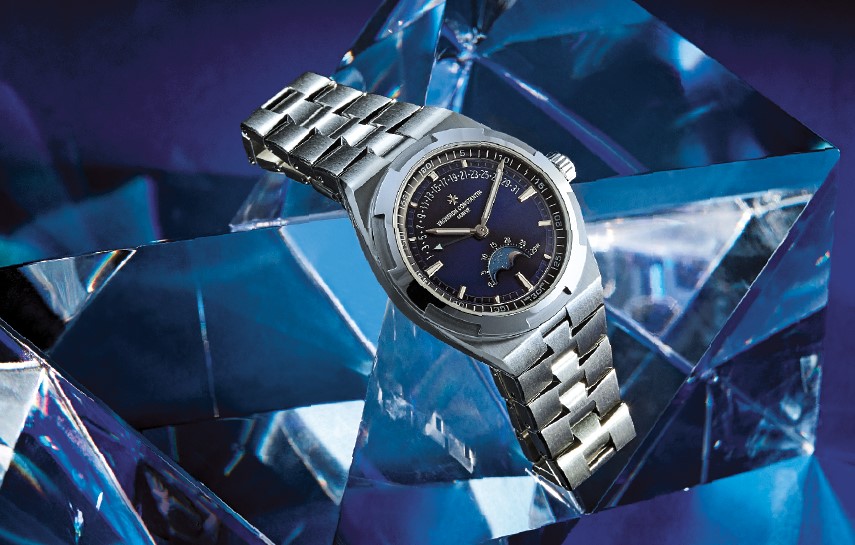With its ‘one of not many’ ethos, Vacheron Constantin is a Maison that sees nothing as impossible. Embodying and celebrating individuality and a singular sense of spirit, it’s also a watchmaker that doesn’t believe in resting on its laurels. Everything from its history of innovation to its choice of collaborator — most recently finding synergy with American artist and explorer Zaria Forman and photographer and adventurer Cory Richards who embody the sense of discovery and openness at the heart of the Overseas collection — pays testament to this vision.
It’s an ethos that harks back to a letter written by François Constantin to his associate Jacques-Barthélémi Vacheron in 1819. “Do better if possible, and that is always possible”. Founded in 1755, the Maison bears the accolade of being the world’s oldest watch Manufacture in continuous production totalling nearly 270 years. Yet whilst this history is bound up in the Vacheron Constantin narrative, its future is not beholden to it. Rather, the brand treads a careful path between the archival and the modern; carving out the contemporary with one eye on the past.

It’s a motto that puts human skill, craft, and interaction at the very centre of Vacheron Constantin’s world, in which heritage is upheld by generations of master artisans, who employ techniques passed down through the ages to create timepieces that reflect the Maison’s technical and aesthetic signatures.
Their deft and expert touch leaves what the brand describes as ‘an indelible imprint’, much like an artist on canvas; so that each timepiece and component therein tells a story of craftsmanship and the guiding mantra to always strive for better. That human focus has seen generations of the same family apprentice and work with Vacheron Constantin — such as the story of the circular-graining specialist who passed on her passion to her daughter by bringing her as a small child to watch her mother on the workbench and where the young woman now works in her turn.

The importance of people to the Maison is captured in the impressive and ambitious design of its Manufacture in Switzerland’s Plan-les-Ouates. The building, conceived by legendary architect Bernard Tschumi, is structured around the idea of an envelope with an exterior surface formed from a metallic sheet that unrolls over the structure’s geometry, opening out into a wood-clad interior featuring dramatic use of glass; such as the atrium in which walkways, stairs, and an elevator are all fashioned from the material. Polished and precise outside; light, airy, and inviting inside, the Manufacture embraces a quality of openness that seamlessly merges the two worlds, a continuity that is also reflected in the inclusion of a tranquil courtyard that extends through the building from east to west. Departmental areas are distinct but interlinked through the building’s visual and functional coherence, as a practical and philosophical means of uniting its people across disciplines. Large bay windows flood the space with natural light and a real sense of conviviality is cultivated here, with the entire architecture designed to foster creativity, natural flow and personal interaction. A pillar of artistry and design, this is the force that powers human endeavour each day and this is the space in which the history of tomorrow will be written.

Inside, skilled artisans hone details with painstaking precision at every stage of production. From Patrimony, with its finely balanced proportions, taut curves, pure lines and slender case; to Overseas, launched in 1996 and reinvented in 2016 to embody a modern, chic and sporty aesthetic; Fiftysix, unveiled in 2018 as a means of capturing the cosmopolitan spirit of casual elegance; Malte, recognisable by its tonneau shape and inspired by the Maltese cross; Historiques, contemporary reinterpretations of archetypal Vacheron Constantin models paying homage to the technical and aesthetic expertise of the Manufacture; Heures Créatives, creations that are reminiscent of iconic models from the Maison dating back to the 1920s, 1930s and 1970s.

Traditionnelle, a tribute to craftsmanship and to the Genevan art of watchmaking passed on from generation to generation; and Égérie, revealed in 2020 as a heady encounter between Haute Horlogerie and Haute Couture, collections are defined by creativity and, whether a micro-screw or a major component, the same meticulous attention to detail abounds.

That daring spirit to always strive for more is part of the Maison’s DNA and has played out in multifaceted ways since the brand’s inception — whether in the high-grade workmanship of a 1755 silver watch signed J. M: Vacheron; or a quarter repeater watch from 1812 which demonstrates the early technical mastery of the Maison; an 1824 yellow gold pocket watch engraved and enameled with a map of Italy; or the first Chronomètre Royal in 1907 that became a hit for its durability, reliability, and precision. It’s a legacy that shows no signs of slowing down.

In 2005, Vacheron Constantin marked its 250th anniversary with the wizardry of the Tour de l’Île; a masterpiece featuring 16 grand complications that won the Grand Prix de l’Aiguille d’or at the Grand Prix d’Horlogerie de Genève. In 2015, a special order for the Maison’s 260th anniversary, reference 57260, once again demonstrated the belief that nothing is impossible. Eight years in the making, the award-winning piece featured a staggering 57 complications. For watchmakers at the Maison looking to embody the do-better ethos at the heart of the brand, their favourite model, it would seem, is always the next one.
